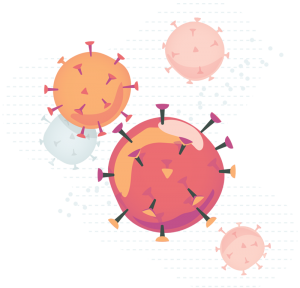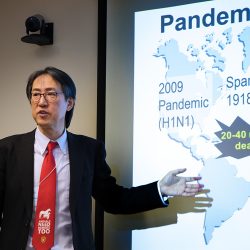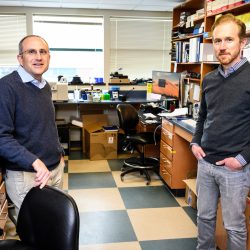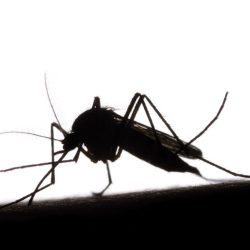Research vs. Coronavirus
UW–Madison scientists are on the leading edge in fighting the pandemic.
Back in 2016, when Zika virus first began to cause infections in the Americas, UW–Madison researchers David O’Connor and Thomas Friedrich ’97, PhD’03 pulled together a coalition of scientists to study the virus and openly share their data. Now O’Connor and Friedrich are using the 2016 playbook to study the novel coronavirus that emerged in Wuhan, China, last December. The virus, which causes flu-like symptoms and respiratory illness, has affected millions of people around the world.
The researchers want to create opportunities to test new vaccines and antivirals and to share critical data in real time for other researchers to use. They also hope to advance biological understanding of the disease, especially to assist clinicians on the front lines responding to the pandemic.
At the Influenza Research Institute, UW professor of pathobiological sciences Yoshihiro Kawaoka is interested in studying how the virus causes illness and what cells it’s capable of infecting. The results could be used for treatments and vaccines, including one under development called CoroFlu in collaboration with Madison-based FluGen, cofounded by Kawaoka.
Adel Talaat, from the School of Veterinary Medicine, is working on a vaccine based on technology his lab has already developed to combat a different coronavirus common in agricultural animals. UW Hospital has joined the National COVID-19 Convalescent Plasma Project, which will study the use of antibodies from people who have recovered from the disease to treat infected patients. Many others on campus have contributed their expertise to news coverage to inform the public.
The UW–Madison researchers are at the leading edge of efforts to understand an emerging human illness.
“My lab is interested in why viruses emerge from somewhere and begin causing diseases in humans,” says Friedrich. “If we can understand that, hopefully we can erect more barriers to prevent this sort of thing from happening in the future.”
Published in the Summer 2020 issue




Comments
No comments posted yet.